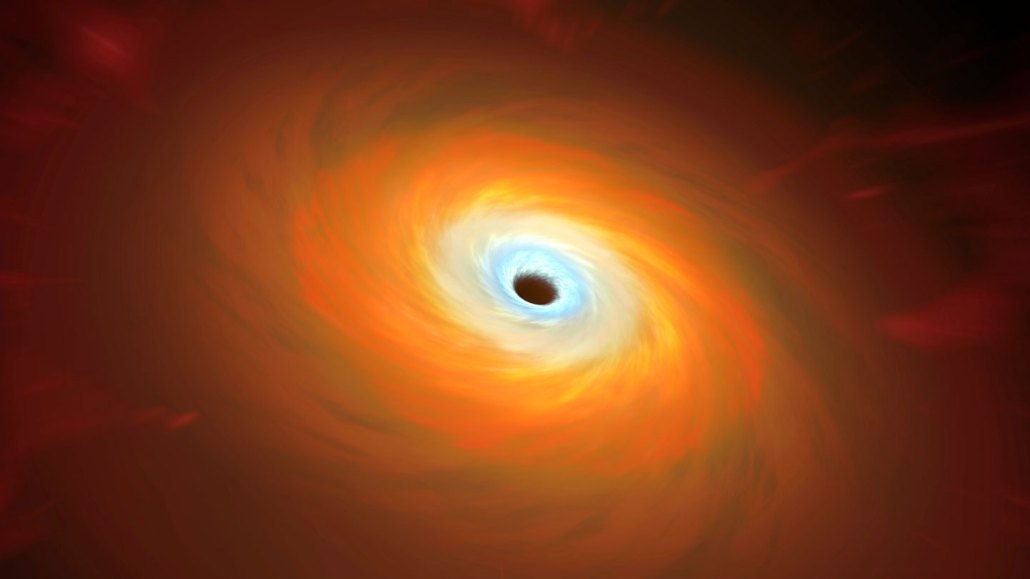accretion: (in astronomy) The growth of any celestial object due to bringing in new building materials, such as gas, plasma, dust and other particles. The object’s gravitational tug brings in these new materials, eventually causing them to coalesce. (v. accrete)
accretion disk: A plane-like disk made from gas, dust and more that grows and orbits around some astronomical object. That gravitational tug of that object, known as the accretor, causes material in the disk to loses energy and angular momentum. This causes the disk to slowly spirals inward. Accretion disks likely play a role in the development of stars and planets and in the powerful spectral emissions that come from quasars, radio galaxies and some supernovas.
black hole: A region of space having a gravitational field so intense that no matter or radiation (including light) can escape.
celestial object: Any naturally formed objects of substantial size in space. Examples include comets, asteroids, planets, moons, stars and galaxies.
core: Something — usually round-shaped — in the center of an object.
disk: A round, flat and usually fairly thin object. (in astronomy) A rotating cloudlike collection of gases, dust or both from which planets may form. Or the structure of certain large rotating bodies in the cosmos, including spiral galaxies.
force: Some outside influence that can change the motion of an object, hold objects close to one another, or produce motion or stress in a stationary object.
friction: The resistance that one surface or object encounters when moving over or through another material (such as a fluid or a gas). Friction generally causes a heating, which can damage a surface of some material as it rubs against another.
gravity: The force that attracts anything with mass, or bulk, toward any other thing with mass. The more mass that something has, the greater its gravity.
planet: A large celestial object that orbits a star but unlike a star does not generate any visible light.
plasma: (in chemistry and physics) A gaseous state of matter in which electrons separate from the atom. A plasma includes both positively and negatively charged particles.
solar system: The eight major planets and their moons in orbit around our sun, together with smaller bodies in the form of dwarf planets, asteroids, meteoroids and comets.
star: The basic building block from which galaxies are made. Stars develop when gravity compacts clouds of gas. When they become hot enough, stars will emit light and sometimes other forms of electromagnetic radiation. The sun is our closest star.
sun: The star at the center of Earth’s solar system. It is about 27,000 light-years from the center of the Milky Way galaxy. Also a term for any sunlike star.
telescope: Usually a light-collecting instrument that makes distant objects appear nearer through the use of lenses or a combination of curved mirrors and lenses. Some, however, collect radio emissions (energy from a different portion of the electromagnetic spectrum) through a network of antennas.
velocity: The speed of something in a given direction.
X-ray: A type of radiation analogous to gamma rays, but having somewhat lower energy.







